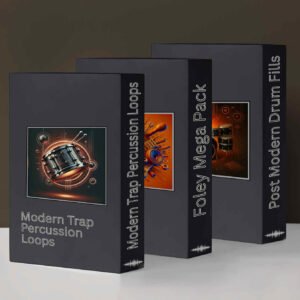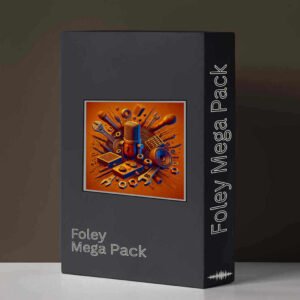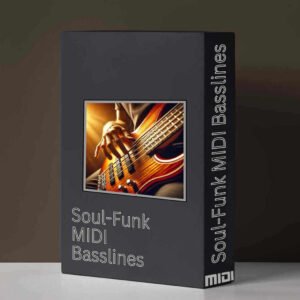
Send Us A Message
>
How to Make Chords That Actually Feel


Matt Crowe
What Does It Mean for Chords to ‘Feel’?
It’s not about complexity or jazz wizardry. Chords that feel usually do one or more of the following:
-
Surprise you in a satisfying way
-
Bring out a specific mood or emotion
-
Flow with movement and intention
-
Sound like a person played them — not a piano roll grid
They’re the kind of chords that make someone go, “Whoa, what was that?” — even if they don’t know why.
Why Most Progressions Sound Sterile
A lot of beginner producers stick to what’s safe: the diatonic chords in a key. Think I–V–vi–IV (aka the most used progression in pop). It’s clean, sure — but it rarely sparks anything special.
The truth is, staying strictly “in key” often leads to predictable, robotic-sounding harmony. The listener hears what’s coming before it lands. There’s no tension. No twist. No vibe.
How to Make Chords That Actually Feel
Here are a few simple tricks you can try today to bring more emotion, edge, and character into your progressions:
🔸 1. Borrow from Parallel Modes or Keys
Instead of staying locked into one scale, borrow chords from its parallel modes. For example, if you’re in C major, try using A♭ major or E♭ minor chords. These don’t technically “belong,” but that’s the point — they create instant color.
🔸 2. Use Tension and Release Intentionally
Suspended chords (sus2, sus4), 7ths, and unresolved harmonies all add emotional weight. Try holding tension over two bars, then dropping a clean major chord — the contrast is what makes it hit.
🔸 3. Break the Rules on Purpose
Throw in a flat-VI or a bII out of nowhere. Try descending chromatic motion between chords. These moves can inject mystery, beauty, or even a sense of drama into your track.
A big part of making chords feel emotional is using lush voicings and colorful extensions. Our Top Neo Soul Chords You Need to Know (And How to Use Them) article covers the exact chords that show up again and again in the most expressive, soulful tracks—from major 7ths to suspended chords and more.
🔸 4. Voice Like a Human
Even basic chords can sound rich if you voice them well. Use inversions, spread out the intervals, or shift individual notes slightly. Human-sounding voicings bring warmth and personality.
🔸 5. Focus on Movement
Chords don’t exist in isolation — it’s how they move into one another that creates feeling. Pay attention to where your bass notes go. Try progressions that rise unexpectedly, or circle back in a way that feels unresolved.
While it’s easy to get stuck analyzing every option, some of the most soulful musicians rely on ear, repetition, and feel instead of strict theory. If you want a fresh approach, try Neo-Soul Progressions: Learn Neo Soul Chord Progressions by Instinct, Not Theory. This hands-on guide helps you build real muscle memory and play with emotion—no advanced theory required.
Shortcut: Use Progressions That Already Feel Good
You don’t have to invent this from scratch. One of the fastest ways to get into emotional chords is to use MIDI chord progressions that already feel a certain way.
That’s exactly why I created [Neo-Soul Chord Progressions] and [RnB Vibelab] — curated sets of chord MIDI files designed to bring that soulful, unexpected, felt energy straight into your DAW.
You can drag them in, tweak them, layer melodies — or just use them as a learning tool to figure out what makes a progression emotionally powerful.
If you want to jump straight into the progressions that make R&B and neo soul feel so different from basic pop, don’t miss our guide to 10 Distinctive R&B Chord Progressions Every Producer Should Know. It breaks down the patterns and moves that instantly create a deeper vibe—perfect for anyone looking to make their harmony more memorable.
Final Thoughts
The difference between “meh” and magic often comes down to harmony. When you write chords that feel like something — even if they’re simple — the whole track levels up.
Trust your ears. Break the rules. And if you need help getting there faster, use tools that are designed to inspire that feeling.
It’s not just soul and R&B—genres like K-pop are using the same jazzy, expressive chord moves to set themselves apart from mainstream pop. To see how these harmonic tricks translate to global hits, check out Why Neo Soul Chords Are Used So Much in K-pop. You’ll discover how K-pop producers blend Western soul with their own unique flavor, creating songs that resonate emotionally across cultures.
Ready to Instantly Add Soul to Your Tracks?
If you want to skip the guesswork and start using professional, emotionally-rich harmony right away, check out our Neo Soul Chord Progressions pack. It’s filled with carefully crafted MIDI files based on the exact chords and techniques covered in this article—perfect for sparking inspiration and taking your music from “fine” to truly unforgettable.
Just drag, drop, and let your chords feel as good as they sound.
More Posts
-
Sale!

Modern Percussion Mega Bundle
$145.00Original price was: $145.00.$102.00Current price is: $102.00. Add to cart -
Sale!

Post Modern Drum Fills
$61.00Original price was: $61.00.$46.00Current price is: $46.00. Add to cart -
Sale!

Foley Mega Pack
Rated 4.83 out of 5$69.00Original price was: $69.00.$54.00Current price is: $54.00. Add to cart -
Sale!

Neo-Soul MIDI Turnarounds
Rated 5.00 out of 5$54.00Original price was: $54.00.$46.00Current price is: $46.00. Add to cart -
Sale!

Soul-Funk Basslines
Rated 5.00 out of 5$34.00Original price was: $34.00.$26.00Current price is: $26.00. Add to cart -
Sale!

Soulful Keyboard MIDI Bundle
Rated 5.00 out of 5$137.00Original price was: $137.00.$92.00Current price is: $92.00. Add to cart




